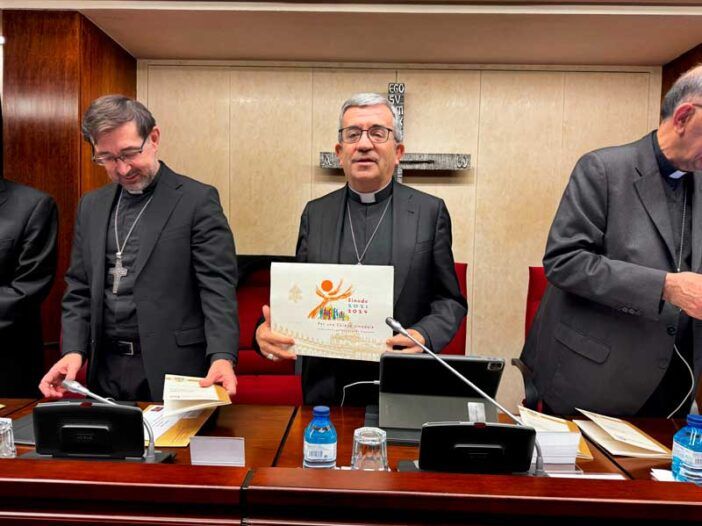Data on the Church’s Presence in the World
Pontifical Yearbook 2022 and Ecclesiastical Statistical Yearbook 2020, Published by L’Osservatore Romano

L’Osservatore Romano’s No. 10 issue of February 10, 2022, published the Pontifical Yearbook for 2022 and the Ecclesiastical Statistical Yearbook for 2020, which reflect the presence of the Church in today’s world. The number of baptized Catholics has increased, as has that of Permanent Deacons. However, the number of Bishops, priests, and professed women religious has declined.
According to “Vatican News,” both Yearbooks are the work of the Central Office of Statistics of the Church. Erected during both periods were two Metropolitan Sees and two Episcopal Sees
Growing Realities
There was a 1.2% increase of baptized Catholics from 2019 to 2020, going from 1,344 to 1,360 million (+16 million), a relative increase in the whole planet, although focused differently according to Continents. There were almost 2% more in Asia and +2.1% in Africa, but only 0.3% in Europe.
The Permanent Deacons are the group with the largest increase in this period, going from 48,238 in 2019 to 48,635 in 2020, a relative increase of almost 1%. The rate grew in the American Continent, and there was a slight decrease in Europe. In Africa, Asia and Oceania, where the global number of Deacons doesn’t yet reach 2.5% of the total, decreased almost 5% down to 1,239 in 2020.
In regard to professed Religious who aren’t priests, the data shows an increase of 50,295 in 2019 to 50,569 in 2020. The increase was concentrated in Africa (+1.1%), Asia (+2.8%), and Europe (+4%). Instead, this group decreased during the two-year period in America (-4%) and Oceania (-6%). In 2020, the rate of non-priest Religious of Africa and Asia reached, on the whole, 43% of the global total, from an incidence of 42% in 2019. Europe continues to have an important relative incidence (+28.6%), but a clear growth.
Candidates to the priesthood decreased worldwide from 114.058 in 2019 to 111.855 in 2020. The tendency of the Major Seminarians observed in the global total, between 2019 and 2020, affected all the Continents, with the exception of Africa, where seminarians increased by 2.8% (from 32,721 to 33,628). In Europe, America, and Asia, but especially in the first Continent, the deceases are significant (-4.3% in Europe, -4.2% in America, and -3.5% in Asia. African and Asia contributed 58.3% to the global total in 2019. In 2020 their quota rose to 59,3%.
Decreasing Groups
“Vatican News pointed out that the number of Prelates in the world decreased slightly between 2019 and 2020, from 5,364 to 5,363. This situation affects almost all the Continents, except for the American, where the number rose by 16. The relative burden of each Continent was stationery during the two-year period, with greater concentration in America and Europe. The proportion of Bishops in Africa in the global total was 13.4% in the two years.
Another group that is decreasing is that of priests, who in 2020 were 4,117 fewer. In North America and Europe, there was a decrease of 1,114 and 4,374, respectively. However, significant increases occurred in Africa (+1,004) and Asia (+778). The most numerous presence is in Europe and America (where 40% and 29.3% of the planet’s priests lived in 2020, respectively, followed at a great distance by Asia (17.3%), Africa (12.3%), and Oceania (1.1%).
In the relationship between priests and Catholics, the data of L’Osservatore Romano revealed an evident disproportion between the offer and the demand. The overall pastoral burden, due to different demographic growth between the different territorial areas, increased in the two-year period from 3,245 Catholics per priest in 2019 to 3,314 in 2020.
By way of conclusion, the professed women religious have decreased considerably. At the world level, they went from 630,099 in 2019 to 619,546 in 2020, which implies a relative variation of -1.7%. In regard to growth, the number of professed women religious increased in the more dynamic Continents, Africa (+3.2%) and Asia (+0.2%), as opposed to a contraction in Europe (-4.1%), America (-2.8%), and Oceania (-5.7%).
Translation by Virginia M. Forrester
Related

“The priest finds his reason for being in the Eucharist”
Fundación CARF
01 April, 2025
5 min

Family Valued: An international appeal for the family
Exaudi Staff
01 April, 2025
2 min

Bishop Luis Argüello Addresses the Challenges of the Church in Spain
Exaudi Staff
01 April, 2025
2 min

THE WAY OF THE CROSS: Accompanying Jesus on the way to the Cross
Luis Herrera Campo
31 March, 2025
5 min
 (EN)
(EN)
 (ES)
(ES)
 (IT)
(IT)

